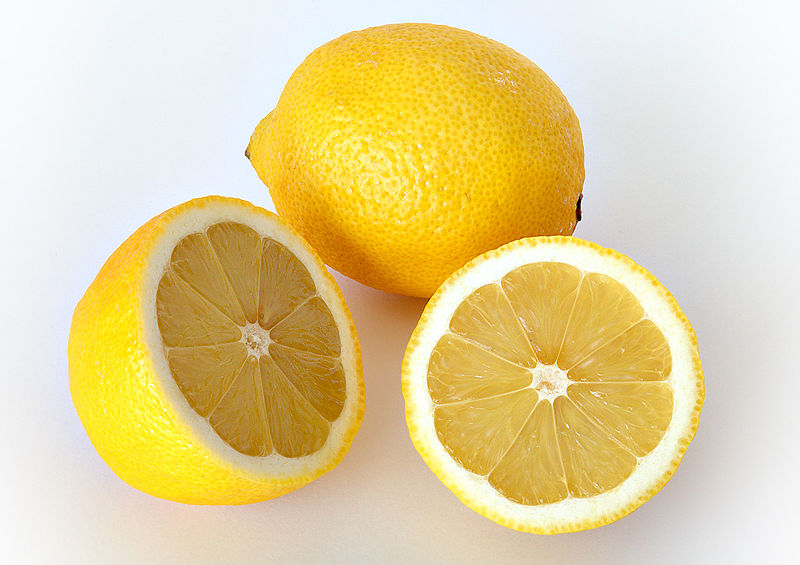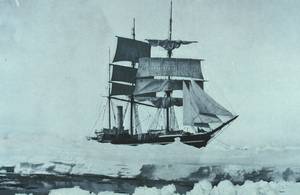Humans and their primate relatives are part of just a handful of animals that are unable to synthesise vitamin C due to a mutation in a single enzyme. Thankfully, most fresh food is abundant with it, in particular citrus fruit. This means that the condition is rare in the western world, with cases normally due to poor diet choice. Sadly for those in less industrialised nations, where food is scarcer, or in countries that rely on food aid, the condition still persists. The treatment is to reintroduce vitamin C to the diet, but this requires both a correct diagnosis and a source of vitamin C. Left untreated, scurvy is inevitably fatal. Before the discovery of a cure, scurvy played a massive role in naval history, particularly in the age of sail when there were limitations on carrying fresh supplies of vegetables and fruit, and long periods were spent on board ship. Ships could not travel far from port out of fear of the deadly disease. It was not unheard of for ships to return to port with 90% of the crew having succumbed to scurvy.
 In 1747, James Lind conducted what is probably one of the first examples of a formal clinical trial into the prevention of scurvy in sailors aboard ships. His work was based on that of Johann Bachstrom, who had noted in 1734 that scurvy was solely due to 'total abstinence from fresh vegetable food, and greens'. Lind conducted his work whilst on board the British naval ship HMS Salisbury and, as was common at the time, many of the crew were suffering from the effects of scurvy. He carried out his studies on twelve of the crew who had succumbed, subdividing them into pairs for the experiment. Isolating these six groups from the rest of the crew, he provided them with various treatments alongside their rations, which included cider, acid, seawater and lemons. At the end of the six day trial, Lind had used the entire supply of fruit on board the ship, but his findings would change naval history: the pair who had received the lemon supplement to their diet made a staggering recovery and were once again healthy, while the others had worsened. This study clearly showed that scurvy could be prevented by the addition of citrus fruit to the sailors' diets. These findings were eventually adopted by the Royal Navy in 1790, but only after a long period of Lind's work being mostly ignored. The tactical advantage of a cure to scurvy during the Napoleonic wars was massive: ships could now hold blockades for years at a time. Other navies soon adopted a similar solution (although the merchant fleets delivering the cure to the blockade still suffered).
In 1747, James Lind conducted what is probably one of the first examples of a formal clinical trial into the prevention of scurvy in sailors aboard ships. His work was based on that of Johann Bachstrom, who had noted in 1734 that scurvy was solely due to 'total abstinence from fresh vegetable food, and greens'. Lind conducted his work whilst on board the British naval ship HMS Salisbury and, as was common at the time, many of the crew were suffering from the effects of scurvy. He carried out his studies on twelve of the crew who had succumbed, subdividing them into pairs for the experiment. Isolating these six groups from the rest of the crew, he provided them with various treatments alongside their rations, which included cider, acid, seawater and lemons. At the end of the six day trial, Lind had used the entire supply of fruit on board the ship, but his findings would change naval history: the pair who had received the lemon supplement to their diet made a staggering recovery and were once again healthy, while the others had worsened. This study clearly showed that scurvy could be prevented by the addition of citrus fruit to the sailors' diets. These findings were eventually adopted by the Royal Navy in 1790, but only after a long period of Lind's work being mostly ignored. The tactical advantage of a cure to scurvy during the Napoleonic wars was massive: ships could now hold blockades for years at a time. Other navies soon adopted a similar solution (although the merchant fleets delivering the cure to the blockade still suffered).
 However, during Scott's 1911 expedition to the South Pole, one of the Royal Navy surgeons is recorded as saying: 'there was little scurvy in Nelson's days; but the reason is not clear, since, according to modern research, lime-juice only helps to prevent it.' So how did the crew on an expedition at the beginning of the 20th century not know how to treat an ailment that had been successfully cured over 100 years earlier? The loss of knowledge has been attributed to several factors. Firstly, Lind showed in his work that there was no connection between the acidity of the citrus fruit and its effectiveness at curing scurvy, in particular noting that acids (sulphuric or vinegar) alone would not suffice. Despite this, it remained a popular theory that any acid would suffice in place of citrus fruit. This meant that when the navy changed from using Sicilian lemons to the West Indian lime, for presumably colonial motives, the result was profound: as the limes were more acidic, based on popular thought it was assumed that they would be more effective, yet they actually contain much less vitamin C and hence cases of scurvy reappeared. Further, fresh fruit was substituted with lime juice that had been either exposed to the air or to copper piping, resulting in at least a partial removal of vitamin C from the juice, negating its effect. The discovery that fresh meat contained high levels of vitamin C, and so was also able to cure scurvy, led to the belief that perhaps it was not caused by a dietary problem but instead was the result of a bacterial infection gained from tainted meat. Finally, the development of steam shipping had led to time at sea being reduced and hence the difficulties in carrying fresh produce were lessened, reducing the risk of scurvy. This meant the reduced effect from either copper pipes or the change to West Indian limes were less profound, and so over time the information was gradually lost.
However, during Scott's 1911 expedition to the South Pole, one of the Royal Navy surgeons is recorded as saying: 'there was little scurvy in Nelson's days; but the reason is not clear, since, according to modern research, lime-juice only helps to prevent it.' So how did the crew on an expedition at the beginning of the 20th century not know how to treat an ailment that had been successfully cured over 100 years earlier? The loss of knowledge has been attributed to several factors. Firstly, Lind showed in his work that there was no connection between the acidity of the citrus fruit and its effectiveness at curing scurvy, in particular noting that acids (sulphuric or vinegar) alone would not suffice. Despite this, it remained a popular theory that any acid would suffice in place of citrus fruit. This meant that when the navy changed from using Sicilian lemons to the West Indian lime, for presumably colonial motives, the result was profound: as the limes were more acidic, based on popular thought it was assumed that they would be more effective, yet they actually contain much less vitamin C and hence cases of scurvy reappeared. Further, fresh fruit was substituted with lime juice that had been either exposed to the air or to copper piping, resulting in at least a partial removal of vitamin C from the juice, negating its effect. The discovery that fresh meat contained high levels of vitamin C, and so was also able to cure scurvy, led to the belief that perhaps it was not caused by a dietary problem but instead was the result of a bacterial infection gained from tainted meat. Finally, the development of steam shipping had led to time at sea being reduced and hence the difficulties in carrying fresh produce were lessened, reducing the risk of scurvy. This meant the reduced effect from either copper pipes or the change to West Indian limes were less profound, and so over time the information was gradually lost.
It was not until 1907 that a professor of hygiene and bacteriology at the University of Oslo, Axel Holst, along with a paediatrician named Theodor Frølich, became interested in beriberi, which is now know to be caused by a thiamine (vitamin B1) deficiency. Their hypothesis was that beriberi was the result of a nutritional deficiency, and they used guinea pigs as test subjects for their experiments to prove this. The choice of test subject was crucial: outside of humans and other primates, very few animals are unable to synthesise vitamin C. Guinea pigs, by chance, are one such creature and, while they did not develop beriberi, they did develop the symptoms of scurvy. Had Holst and Frølich chosen almost any other animal, their work would not have discovered that guinea pigs develop scurvy when treated on a diet of just grain. They went on to show that they could prevent scurvy by a simple treatment of lemon juice, something that Lind had shown a century and a half earlier. While their original publication on these results was not well received, as the idea of nutritional deficiencies was seen as something of a novelty at the time, the model they had developed with guinea pigs was vital to the work that would succeed them. It was Albert Szent-Györgyi who used this animal model and who eventually discovered vitamin C in 1930, for which he was awarded a Nobel Prize.
The work of James Lind on board of the HMS Salisbury will no doubt forever be remembered in the history books as a great turning point in science, while the loss of a cure to scurvy will continue to be overlooked. The cost of these past mistakes to human lives may lie firmly in the past, but the tale still holds relevance within the modern world. Time and again during the history of scurvy indivuals pushed their own agendas and beliefs over the results of science, the consequences of which should not be forgotten.









Comments
Add a comment